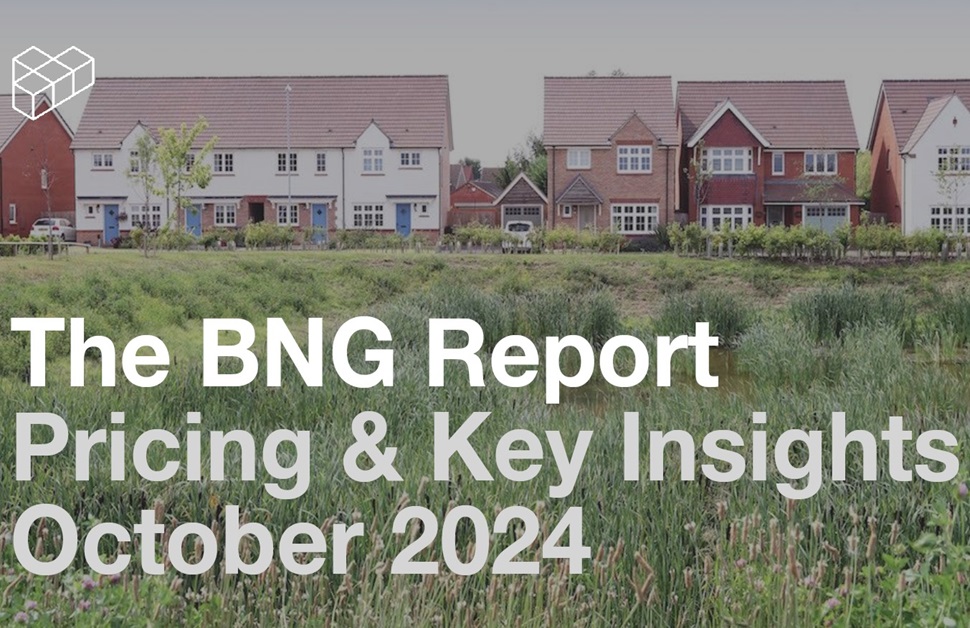
1.1] Natural England (NE) undertakes its licensing work under agreement with Defra. It is proposing four new policies for European Protected Species (EPS) licensing. They aim to achieve better outcomes for EPS and reduce costs, delays and uncertainty for developers. Their proposals shift the focus away from protecting animals on development sites and towards improving populations in the wider local area; offer flexibility in the location of compensatory habitat provision; allow EPS access to temporary habitats such as mineral workings and brownfield sites; and allow reduced survey effort in appropriate circumstances.
1.2] Arbtech Consulting Limited is an Environmental Consultancy providing specialist services in the fields of arboriculture and ecology to a predominantly private customer base. The Company is an SME employing 20 professionals and had a published turnover of £1-2 million. The Company submits approximately 10% of the EPS applications for bats received by NE and is therefore if not the leading consultancy in this matter is certainly in the top-ten businesses. The Company operates across the UK and advices on the full range of EPS species. As such the Company’s commercial interests are closely correlated with European Protected Species (EPS) licensing and changes in policy are of a core business interest to the Company. Our response is offered within this context. Individual scientists within the Company may also make personal responses to the Natural England Consultation.
1.3] The Company welcomes the recognition within Natural England that there are opportunities to achieve better outcomes for EPS and to reduce costs, delays and uncertainty for applicants. We deliberately choose to use the term applicants to describe those individuals or organisations seeking EPS licences rather than the term “developers” as used by NE as we consider that the term better reflects our client base – many of whom are private individuals seeking to carry out minor works to dwellings and whose application may be their only experience of EPS licensing. The term “developers” could imply those with a professional commercial interest in property or land development.
1.4] In responding we would like to make some general comments first before answering the specific questions raised by NE in the consultation document.
General Comments
2.1] Timing of the Consultation – It is difficult not to be acutely aware of the upcoming UK referendum vote on the nation’s continuation as a member of the European Union (EU) in June 2016. As, by very definition, the concept of European Protected Species is intricately linked to the UK’s membership of the EU, we question the timing of this consultation exercise. This organisation considers that any changes to EPS policy would be best deferred until such a time as the EU referendum vote is resolved and when there is then greater clarity of any changes in wildlife protection in the UK resulting from this.
2.2] Changes in policy in England – It is unclear to Arbtech to what extent, if any, Natural England has discussed the contents of its consultation document with the other Statutory Nature Conservation Organisations of the UK. We can see no reference in the consultation document to their engagement and therefore we assume that the policy changes are for England only and being put forward in isolation from the rest of the UK. We consider that this is a scientifically flawed approach as EPS generally do not respect the internal boundaries of the UK nations. We are also concerned that increased divergence of policy across the SNCOs relating to EPS licensing of the UK can only lead to greater confusion. We consider that an applicant in Scotland, Wales or Northern Ireland has every right to expect legislative and policy consistency with the same in England. As a UK consultancy we are acutely aware that many of our clients operate across the UK and will be frustrated by increasing divergence in policy.
2.3] Relationship of EPS Policy and the role Local Planning Authorities – we would urge Natural England to apply great caution to bringing about any policy changes that increasingly rely on the ecological expertise or delivery of individual local planning authorities. The reason for our concern is the great divergence in the standards of that expertise and delivery and the increasing widening of that divergence. Arbtech is aware of Local Planning Authorities that have entirely lost their ecological expertise and many that are out-sourcing it to private providers.
2.4] The Licensing Process – we note that the consultation document makes no consideration of whether a review of the licensing process itself should be adjusted to bring about better outcomes for EPS and greater efficiencies to applicants. Arbtech understands that there are many European states that chose not to deliver the requirements of the Habitats Directive with respect to EPS through a licensing system more-or-less equivalent to that chosen by the UK. We suspect that the regime employed in the UK is one of the toughest in the EU (from an applicant’s perspective at least).
Whilst arguably this might be a reason for national pride in a globalised market it also promulgates the perception amongst some that development is disproportionately burdensome in the UK because of wildlife legislation bureaucracy. It is certainly the case that of the total amount of money spent on EPS in the UK there includes a substantial element involved in the process of obtaining an EPS licence. We consider that Natural England (and the other UK SNCOs) would be well advised to conduct a more fundamental consideration of EPS licensing – perhaps even going as far as seeking models where Favourable Conservation Status could be achieved without the current timely and costly licensing process.
2.5] Arbtech conceives a model whereby Natural England (and the other UK SNCOs) would license environmental consultants to survey and supervise developments without the requirement for individual project licences being necessary. In this way a greater proportion of the total money spent on EPS could be focused on favourable outcomes rather that invested in bureaucratic process. Such a model would still enable the SNCO to control and regulate because they would have the responsibility for ensuring the professionalism of the badged consultants and it would allow the limited resources of the SNCO to be more targeted at the audit of the ecological consultancies and the setting of strategic targets and direction for them.
This model would also free local authorities from having to be heavily involved in EPS protection (in a way that is currently often repetitive and inefficient) and therefore allow those authorities to concentrate their meagre resources to maximising ecological outcomes resulting from their own operations and championing local ecological receptors.
2.6] Regulatory responsibility for outcomes – Arbtech would welcome the SNCOs taking greater ownership of guidelines that relate to EPS protection – for example for bat species the survey guidelines that are the default standard are promulgated by the NGO charity – The Bat Conservation Trust. We understand that the SNCOs have had staff input into these and other similar documents but there seems to be too great a separation between the regulators and the documents setting regulatory direction. We would like to see less emphasis on guidelines that are open to professional interpretation and more emphasis on minimum standards that have to be achieved.
2.7] The Business Engagement Assessment – the consultation document is associated with a business engagement assessment. Arbtech considers that this document is rather trite and ill-considered. The document as it appears is perceived by us to be tokenistic. There is no real consideration of the impacts upon the businesses that would be impacted by the proposed policy changes.
2.8] For example, the document finishes with a “consideration” of the environmental consultancy sector but there is no evidence of impact (in terms of tangible figures for loses to the sector, etc.) and just a rather glib assumption that some of the business lost to this sector could be compensated for by those companies turning their services towards advising on habitat improvement. Following the point made in [2.4] above there is no apparent consideration of how the “business” of Natural England could be substantially modified to improve outcomes for EPS and applicants.
2.9] Having made general comments, Arbtech now offers specific responses to the questions posed by NE in the consultation document.
Specific Comments
Proposed Licensing Policy 1: Greater flexibility when excluding and relocating EPS from development sites
“Defra considers that compensation for EPS impacts can be delivered without the need to relocate or exclude populations, where: exclusion or relocation measures are not necessary to maintain the conservation status of the local population; the NPPF avoid-mitigate-compensate hierarchy is followed; and compensation provides additional benefits to the local population”
3.1] [“Question 1: Do you think that this policy could benefit GCN”]? – It is conceivable that GCN could benefit from the policy but the policy assumes a good understanding of GCN population levels at local, regional and national levels. Such understanding of the population abundance and distribution would be key to making quality judgements about under which circumstances this policy change could apply. We consider that there are parts of England where the population status of GCN is sufficiently understood to make such judgements but equally there are large parts of the country where there is not sufficient understanding. There may be a greater role for using environmental DNA (eDNA) in resolving some of this knowledge gap.
Is there not still a question mark about the legality of the scenario? Using the consultation example, the mortality of GCN would be licensed by Natural England providing the applicant with protection under the Conservation Regulations but would they still not be at risk of having contravened the Wildlife and Countryside Act 1981 (as amended) – because it would be hard for them to argue that they were taking reasonable measures to avoid injury or death to a Schedule species?
3.2] [“Question 2: Do you think this policy could benefit other EPS?”] – It is also conceivable that the policy could benefit other EPS although in each case the ecologically validity of that presumption would need to be scientifically evaluated. The comments made in 3.1] above are still pertinent in these cases.
3.3] [“Question 3: Do you think that this policy could reduce costs, delays and uncertainty for developers?”]. It is tempting to consider that it might – however the applicant would need to invest resources and time in investigating the off-site compensation scheme which would also almost inevitably involve protracted third-party ownership negotiations. As such the reductions in costs, time and uncertainty may prove illusory. The scenario posed in the consultation document is rather optimistic in that a benign publicly owned land option is available. It most cases it would not be and in many cases surrounding third-party land owners might be hostile to the proposals.
3.4] [“Question 4: Do you have examples of where this policy could have been helpful?”] In general, the policy would seem to be most applicable to scenarios where the cost of translocation and capture is disproportionate to the ecological risk to the Favourable Conservation Status. The Principal of the Company worked upon a scheme where a crematorium was being developed on a former 9-hole golf course. Adjacent to the former golf course was an active private golf course that had a major great crested newt breeding pond present. The applicant had to spend over £50K (not including their own time) on a translocation exercise to remove GCN from the construction footprint.
The process of developing this GCN translocation process with the SNCO and Local Planning Authority was protracted (over a year) and the translocation exercise took over four months. Three great crested newt in total were translocated. In this case it would seem that had the applicant been able to invest £50K in improving the adjacent site there would have probably been a more favourable outcome for both EPS and applicant – although this does assume that the adjacent landowner would have been amenable to such an approach.
Proposed Licensing Policy 2: Greater flexibility in the location of newly created habitats that compensate for habitats that will be lost.
“If the licensing tests are met and the NPPF avoid-mitigate-compensate hierarchy is followed, off-site compensation measures may be preferred to on-site compensation measures, where there are good reasons for maximising development on the site of EPS impacts, and where an off-site solution provides additional benefit to the local population than an on-site solution. The licensing tests must be satisfied”.
4.1] [“Question 5: Do you think that this policy could benefit GCN?”] – on balance this proposed policy change appears to offer scientific and efficacy merit for GCN. The driving concern of developing a compensation scenario is that it should achieve the greatest value to Favourable Conservation Status within the proportionate resources available.
As such any policy change that widens the geographical opportunity appears to be of value. The policy would benefit from strategic direction with Natural England establishing a layer of favoured compensation areas to be targeted across England – reflecting ecological need, existing habitat and habitat connectivity. Without targeted direction of compensation, the approach risks still being piecemeal (in much the same way as it is now) with mitigation and compensation really just shadowing development rather than being focused at areas of greatest concern and/or opportunity.
4.2] [“Question 6: Do you think that this policy could benefit other EPS?”] – in principle the proposed policy change appears to offer merit as described in 4.1] above – albeit the ecological circumstances of each EPS would need to be evaluated. Clearly it is less likely to be of value and applicability to EPS that have more specific and exacting niche requirements – such as a very roost faithful bat such as the Natterer’s bat for example.
4.3] [“Question 7: Do you think that this policy could reduce costs, delays and uncertainty for
developers?”] – same response as 3.3] above.
4.4] [“Question 8: Do you have examples of where this policy could have been helpful?”] – having determined that compensation is the most favourable approach (balancing development need and ecological considerations] this policy change should be broadly applicable to many EPS scenarios.
Proposed Licensing Policy 3: allowing EPS to have access to temporary habitats that will be developed at a later date.
“Where development (such as mineral extraction) will temporarily create habitat which is likely to attract EPS, Defra favours proposals which enable works to proceed without the exclusion of EPS, where the conservation status of the local population would not be detrimentally affected. On completion of development such sites would be expected to contribute to the conservation status of the local population as much as or more than the land use which preceded development. The measures to achieve this should be secured by a legal agreement.”
5.1] [“Question 9: Do you think that this policy could benefit GCN?”] – Of the proposed policy changes Policy Change 3 is the most specific in terms of the sectors likely involved – primarily waste and mineral extraction and probably the most tailored to GCN. Arbtech can conceive of scenarios that would be improved as a result of this policy change.
In the case of mineral extraction, it is the actual operation that often creates the conditions that result in the occupancy by GCN – the formation of open water voids onto what was previously featureless agricultural land, for example. Therefore, for the policy to work the end land-use should seek to maintain the habitat that resulted from the temporary works that was favoured by the EPS rather than be returned to its “native” condition.
5.2] [“Question 10: Do you think that this policy could benefit other EPS?”] – Proposed policy change 3 appears to be less applicable to other EPS with the exception possibly of rarer reptile species.
5.3] [“Question 11: Do you think that this policy could reduce costs, delays and uncertainty for developers?”] – the proposed policy change would appear to bring benefit to a small but significant sector – mainly the mineral extraction and waste management sector. It does appear to bring tangible benefit to this type of applicant.
5.4] [“Question 12: Do you have examples of where this policy could have been helpful?”] – prior to being engaged by Arbtech the Company Principal worked on a scheme for a mineral company at site in Oxfordshire. The client was proposing to extend their existing sand quarry to the west into ecologically sterile intensive farmland. This policy change would have wholly benefitted the applicant in that specific case and would almost certainly have poised no significant risk to Favourable Conservation Status.
Proposed licensing policy 4: appropriate and relevant surveys where the impacts of development can be confidently predicted
Natural England as the licensing authority is entitled to rely on a reduced surveying effort in setting licence conditions where:
• there is a lack of survey information to remove uncertainty as to the level or type of impact;
• it is necessary to enable development to proceed to a particular timescale for which there is a demonstrated need;
• the ecological impacts of development can be predicted with sufficient certainty;
• and the mitigation or compensation will ensure that development does not damage the conservation status of the local population of any EPS concerned.
Note: We think that there is a typographical error in the first bullet point? Should it have instead something like “the lack of survey effort does not result in an uncertainty as to the level of impact”?
6.1] [“Question 13: Do you think that this policy could benefit GCN and bats?”] – It is difficult to conceive how bats or GCN would benefit from this proposed policy change other than in theoretical circumstances where the mitigation and compensation measures offered in the low survey state are greater than those that might be eventually determined by additional survey effort. In effect the policy change would need to cause a shift towards overcompensation to benefit EPS. Over-compensation is often currently rejected by Natural England.
6.2] [“Question 14: Do you think that this policy could benefit other EPS?”] – We would employ the same caution expressed in 6.1] above to other EPS such as hazel dormouse.
6.3] [“Question 15: Do you think that this policy could reduce costs, delays and uncertainty for developers?”] – The policy as it appears to be conceived would not reduce cost to the applicant because it is presupposed that the cost in reduced surveying be re-invested in increased mitigation and compensation (or at least in greater mitigation and compensation that might ultimately be required as a result of further surveying). The policy change may well result in benefit to applicants in terms of timetables and uncertainty.
6.4] [“Question 16: Do you have examples of where this policy could have been helpful?”] – There are many cases when environmental consultants undertake a Preliminary Ecological Appraisal and make an overall assessment that no further survey effort is required – even in cases where this may seem to go against survey guideline standards.
So for example one or two old bat droppings in a structure are more likely to indicate an exploratory entrance by a bat in the past than an active roost requiring up to three more seasonally constrained surveys. However, our experience is that regulators are resistant to consultants making arguments that counter the perceived wisdoms of published guidelines. This is entirely frustrating as the wealth of experience of making such a risk judgement is actually held by the environmental consultancy sector rather than regulators. An experienced environmental consultant is probably much better equipped to make “the call” than a desk-bound regulatory ecologist is.
In such circumstances if the consultants “call” could be strengthened by investing the survey resource in practical mitigation and compensation measures then the policy change may be helpful. We expect that the appropriate conditions necessary to suit this policy change would actually be very limited and so the overall benefit would be minor.
End of Response.






